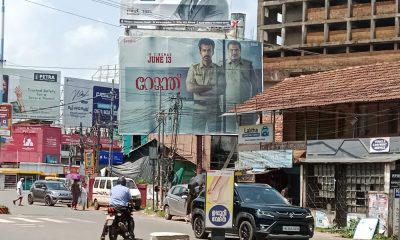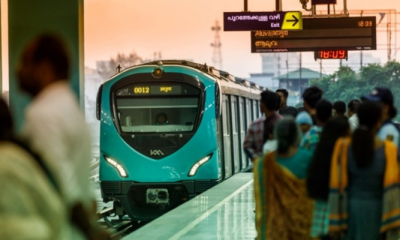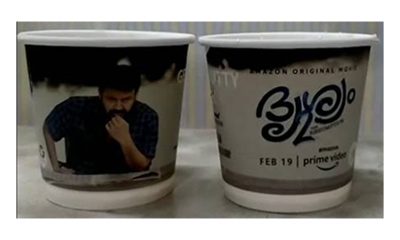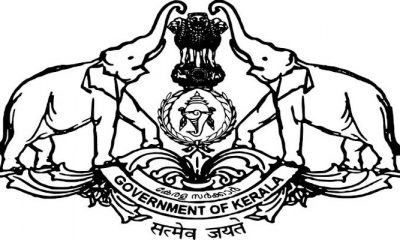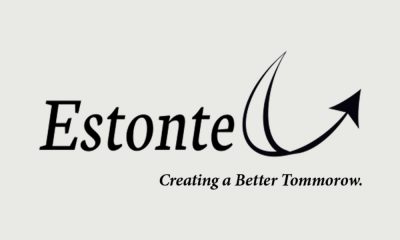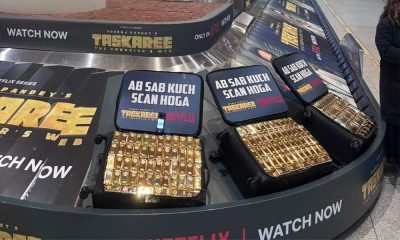Media Planning & Buying
Kerala OOH: Gearing up for the next growth wave
The Kerala OOH industry is assiduously etching a new growth story that revolves around self-regulation, good governance, social responsibility, and above all, client-centricity. The OOH industry enjoys high visibility in the God’s Own Country by virtue of the expansive spread of outdoor media assets, hoardings in particular, across all cities and towns in the state. Rajiv Raghunath caught up with senior office bearers of Kerala Advertising Industries Association (KAIA) to get a sense of the local industry’s business dynamics.
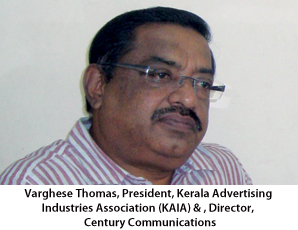 The Kerala OOH canvas is a colourful tapestry of brands – international, national and local. Most advertising brands that enter the state are cognizant of the inherent strengths of the local outdoor medium in effectively delivering brand messages to the target consumers. A journey by road or rail across the state will testify the looming presence of outdoor media in the cities and towns. The density of outdoor media assets is itself overwhelming. To top it, the size of hoardings – that form the bulk of outdoor media formats across the state – have become bigger.
The Kerala OOH canvas is a colourful tapestry of brands – international, national and local. Most advertising brands that enter the state are cognizant of the inherent strengths of the local outdoor medium in effectively delivering brand messages to the target consumers. A journey by road or rail across the state will testify the looming presence of outdoor media in the cities and towns. The density of outdoor media assets is itself overwhelming. To top it, the size of hoardings – that form the bulk of outdoor media formats across the state – have become bigger.
To a great extent, the Kerala OOH industry’s larger-than-life presence is reflective of the state’s unique socio-economic scenario. Kerala registered an impressive 8.2 per cent GDP growth in 2012-13 against the national GDP growth of around 5 per cent that year. Not just that. Kerala is one of the greenest and most socially developed states in India with many of its social indicators on par with those of the developed world. What’s more, the state has emerged as number one in three key growth indicators – GDP, per capita consumption and capital expenditure – surpassing the national average.
Notably, foreign fund inflows into the state have consistently grown year-on-year. For instance, foreign funds into the state rose from Rs 500 billion in 2011 to Rs 650 billion in 2012, with inflows from the Gulf countries contributing around 20 per cent of the State Domestic Product (SDP).
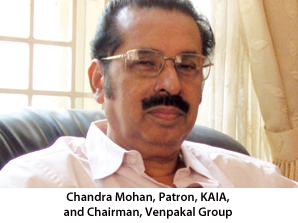 These factors have greatly contributed towards Kerala emerging as a key consumer market. Hence, while the state is heavily promoted as a popular tourist destination with the tagline’God’s own country’, it is also a key target market for a whole gamut of consumer brands.
These factors have greatly contributed towards Kerala emerging as a key consumer market. Hence, while the state is heavily promoted as a popular tourist destination with the tagline’God’s own country’, it is also a key target market for a whole gamut of consumer brands.
Encouraged by the expanding consumer base in the state, homegrown brands like Joyalukkas, Seematti, Bhima, Malabar Gold, Jayalakshmi, to name a few, have established a sweeping presence across cities and towns. This is writ large on the outdoor media.
Gold consumption level in Kerala is among the highest in the country, and this spawned a rise of jewellery retail chains in the state, which is again evident on the OOH landscape. Reports indicate that the state has the largest number of retailers in the gold jewellery segment — more than 5,000 compared to 1,000 a decade ago. The state consumes about 75 tonnes of gold valued at about Rs 20,000 crore of the 650 tonnes of gold sold in India every year and is home to some of Asia’s largest gold showrooms. This huge demand springs from the growing remittances amounting to Rs 40,000 crore annually by its 20 lakh-strong non-residents based in the Gulf and the US.
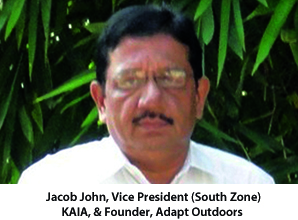 Among various consumer goods, consumer electronics and appliances makers have been focused on the Kerala market, especially during the Onam season. Reports say that demand for consumer electronics and appliances during this harvest festival season accounts for 40-60 per cent of total sales of several leading consumer electronics products and appliances in the state.
Among various consumer goods, consumer electronics and appliances makers have been focused on the Kerala market, especially during the Onam season. Reports say that demand for consumer electronics and appliances during this harvest festival season accounts for 40-60 per cent of total sales of several leading consumer electronics products and appliances in the state.
Referring to the unique characteristics of the Kerala OOH market, Varghese Thomas, President, Kerala Advertising Industries Association (KAIA) and Director, Century Communications, told Outdoor Asia that “the high purchasing power of people in the state powered by non-resident Indian (NRI) inflows attract consumer brands to the state. He observed that as Kerala manufacturers only a limited range of products, the market is a highly attractive destination for a whole range of products that are manufactured in other parts of the country. These products have been using the outdoor media to establish and deepen their connect with Kerala consumers.
Bringing forth another key attribute of the Kerala OOH market, Thomas remarked that unlike other OOH markets around the country, and perhaps overseas, “this is not a single-city market. The entire state comes across as one large OOH market straddling many cities and towns.
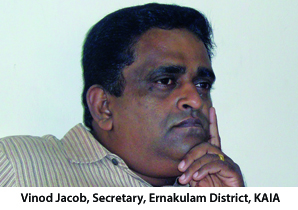 He pointed out that Kerala does not have the archetypical Indian villages. Rather, the rural parts of the state also have relatively high standard of living with commensurate demand for products and services, so advertising brands are also reaching out this segment. That explains the density of hoardings across the state, in contrast to states like Karnataka and Andhra Pradesh where there are very few hoardings beyond the city limits.
He pointed out that Kerala does not have the archetypical Indian villages. Rather, the rural parts of the state also have relatively high standard of living with commensurate demand for products and services, so advertising brands are also reaching out this segment. That explains the density of hoardings across the state, in contrast to states like Karnataka and Andhra Pradesh where there are very few hoardings beyond the city limits.
In a similar vein, Jacob John, Vice President (South Zone), KAIA, and Founder of Adapt Outdoors, added that many of those hoardings located off city limits in Karnataka and Tamil Nadu are owned by Kerala OOH media owners. The Kerala OOH industry has established its footprint in many Tier II & III cities in the southern region.
So, is the Kerala advertisers industry successful in bringing new advertising brands into the OOH fold, considering that the state is one of the best launch markets in the country? “Not as much as it should have, said John, adding that more brands will be drawn to the market if new media formats come up. Varghese added that there is scope for large format digital billboards to succeed in this market.
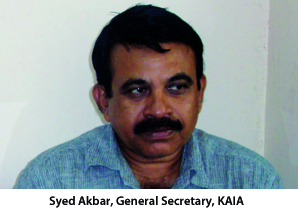 Commenting on the potential of drawing more brands to Kerala OOH canvas, Vinod Jacob
Commenting on the potential of drawing more brands to Kerala OOH canvas, Vinod Jacob
Secretary, Ernakulam District, KAIA, observed that many advertisers in other regions of the country do not seem to appreciate the unique strengths of the Kerala market. Hence, concerted efforts may be required to educate the advertising brands about the potentials of the Kerala market and how the OOH can serve as the key vehicle to connect the brands with consumers in the state.
Vinod Jacob added that high density of population in Kerala also reinforces the attractiveness of OOH medium in the state. Typically, the medium attracts categories like two- and four-wheelers, cellular services, textiles, jewellery, etc.
Talking about some of the concern areas, John said that flexes don’t seem to come up on time, and the quality of flexes is also a lot left to the desired. This is a stumbling block considering that crucial time is lost in a 20-day campaign. He added that if an agency is tasked to monitor outdoor media properties and campaigns in the state, such a step will greatly raise advertiser confidence in Kerala OOH. On this, Varghese said that the IOAA should take up this responsibility for markets across the country. He added that the monitoring system should also weed out players who adopt malpractices.
 John also pointed that brands tend to release ads for print, television and outdoor around the same time, but the OOH campaign is usually the last one off the block, so by then most of the advertising budgets would have been exhausted. Nonetheless, OOH can still play an effective role as a reminder medium.
John also pointed that brands tend to release ads for print, television and outdoor around the same time, but the OOH campaign is usually the last one off the block, so by then most of the advertising budgets would have been exhausted. Nonetheless, OOH can still play an effective role as a reminder medium.
Talking about some of the pro-active measures that the industry needs to undertake, Girish Kumar, Treasurer, KAIA, and Director of Nova Ads, pointed out that the OOH industry has not ushered in any big changes so far and is way too reliant on hoardings. He said that while the size of hoardings has grown, there is no uniformity of outdoor formats available in the state.
Girish Kumar noted that print, television and Internet are putting greater pressure on OOH as the latter is not taking an innovative path. He maintained that as eCommerce picks up, many brands will be drawn to that medium and so OOH will have to incorporate social media to ensure its relevancy.
On transit media, he said that Kerala State Road Transport Corporation (KSRTC) provides advertising opportunities but Volvo bus branding and the like have not taken off in the state.
KAIA has been proactively creating the necessary conditions for the OOH industry to expand its operations as also function responsibly. Chandra Mohan, Patron, KAIA and Chairman, Venpakal Group said the unity of the association is a major strength for the industry. He reckoned that proliferation of display medium is proving to be counter-productive for the industry. As the hoardings are of extremely large size, it won’t be viable to the advertisers.
Varghese recounted that the Association has a rich legacy considering that it made its debut in 1990. The Association has 9 chapters (districts) and two more will be added soon — Pathanamthitta and Alleppey. The Association has 660 members, all media owners. Vargehese categorically stated that “Kerala has only one association, which is also a special feature. The Association has chapters and representatives from all parts of the state.
Apparently, in 2000 some of the Association members had also travelled to Mumbai to help form a national outdoor association, which then ran for 3-4 years. This was before the Indian Outdoor Advertising Association (IOAA) was formed.
Talking about the key goals and objectives of the Association, Varghese says that earlier media owners went to agencies for business. Now agencies are coming to Kerala and concentrating the work in the hands of few. “We have to change this in a way that all the members get the benefit of business entering the state, he said. John added that “we cannot allow a monopoly in the state.
Chandra Mohan reiterated that “we are introducing various regulations to deliver maximum benefits to the media owners, he said. Most of the business comes from gold merchants and textiles. He pointed out that national agencies are concentrating business in the hands of few, whereas the Association endeavours to give business to the maximum number of players.
He said that media owners should focus on building quality media assets instead of getting into agency business.
The Association is also focused on giving the local OOH industry a better bargaining capacity by bringing all members on a common platform. In addition, the elected body has submitted a memorandum with the state government to introduce uniform taxes that are applicable in the outdoor industry. Today, there are 999 panchayats in the state, of which around 500 are collecting taxes including license fee from the outdoor industry. Now, the state government is forming a Rate Fixing Committee which will have two representatives from the Association. The Committee will come under the Local Administration Ministry.
KAIA has proposed a two-tiered tax rate, whereby two categories of panchayats, corporations – as per population size and revenues generated – shall collect tax as per the slabs defined.
The Association leaders also pointed out that OOH media owners have been living under the threat of corporations removing some of their media on some pretext or the other. The Association has approached the corporations and councils to introduce a single licensing system. Corporations such as in Kochi have adopted it. Others will follow suit. John said that Government has passed the order and it has received the Governor’s consent. Places like Kozhikode, Muvattupuzha are implementing the system, said Syed Akbar, General Secretary, KAIA.
When asked if such measures would have a big impact on business, Varghese said that clients should indeed know if the properties are licensed or not, and the media owners should be able to show documentary proof. John explained that media owners have to get a statutory structural certificate from an A class structural engineer approved by the particular corporation. Now it remains to be seen if the entire industry follows the norms.
The Association has also taken several other key initiatives to promote good governance in the industry. Introduction of third party insurance is a case in point. The Association is planning a workshop to spread awareness of the insurance needs of industry.
Among other initiatives, the Association will also look to partner with civic bodies in the state on matters like city beautification planning, etc. This would entail creating public utilities that will serve as new outdoor advertising properties as well. In time, perhaps the state could also boast of innovative OOH hotspots.
Today, allied OOH activities like brand activities and other BTL initiatives are at a nascent stage in the state. But, it is a question of time when the OOH will unfold in all its resplendence in Kerala. This would of course depend to a great extent on how physical infrastructure too develops in the state.
For the record, Kerala has 145,704 km of roads (4.2% of India’s total). This translates into about 4.62 km of road per thousand population, compared to an all-India average of 2.59 km. Nearly all of Kerala’s villages are connected by road.
Traffic in Kerala has been growing at a rate of 10–11 per cent every year, resulting in high traffic and pressure on the roads. There are eight designated national highways in the state. The state also has three major airports – in Thiruvananthapuram, Kochi and Kozhikode. Besides, an international airport is coming up in Kannur. These airports are creating new OOH opportunities for diverse brands.
The stage is set for Kerala OOH to board a high growth trajectory.
-

 Campaigns
CampaignsBritish Heart Foundation turns memorial benches into celebrations of survival
-

 Campaigns
CampaignsIncuspaze’s ‘Your Office, Your Way’ OOH campaign
-

 Insights
InsightsCraig Benner on why 2026 will be the year OOH starts leading
-
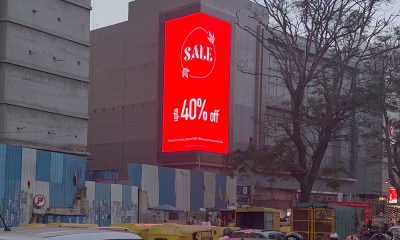
 Digital Display
Digital DisplayOne of South India’s largest anamorphic DOOH screens installed at Mantri Square Mall

